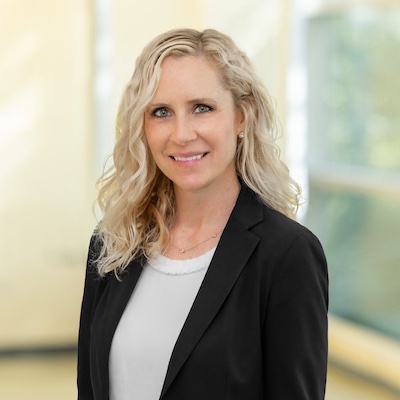Scientists at the University of Hawaii have improved tools for making large changes to genomes and have licensed the technology to a new startup called Komo Biosciences, its leaders told Endpoints News exclusively.
The startup has secured seed funding — it won’t say how much — from Genesis BioCapital, LDV Partners, General Inception, Modi Ventures and other unnamed biotech investors, and will have sites in Honolulu and Cambridge, MA.
 Jennifer Manning
Jennifer ManningAlthough only in its infancy, Komo is the latest startup attempting to wrangle enzymes called integrases. Integrases and related enzymes adept at manipulating swathes of DNA have recently become some of the hottest commodities in gene editing, as scientists seek new ways to completely replace faulty genes or install new genetic programs into cells.
CEO Jennifer Manning said she expects that her startup’s first major revenue could come from licensing its integrases to other gene therapy developers, and that it could also engineer cell lines that other drugmakers use to produce biologics.
Integrases are used by viruses to move and insert large stretches of DNA into hosts, but only at fixed sites in the genomes — which has restricted their potential. Methods using prime editing can write in those genetic landing pads. But until recently, that method has been inefficient, often only inserting genes a few percent of the time.
To improve the approach, Jesse Owens, an assistant professor at the University of Hawaii, set out to make better integrases with help from bacteria-infecting viruses called phages. Owens broke a gene in half that the phage needs to replicate, and then forced them to use an integrase to stitch it back together.
Phages that evolved better integrases grew more quickly. After repeating the cycle more than 200 times, Owens found ones that could insert genes into about 80% of the pre-installed landing pads and an estimated 96% of cells. The study was published last week in the journal Nucleic Acids Research.
“It’s a huge improvement. We didn’t think we’d see something that drastic,” Owens told Endpoints. “We’ve finally reached this efficiency where integrase technology will be the choice method for inserting DNA.”
Improving how others make medicines
Owens’ lab used its evolved integrase to insert a large gene called Von Willebrand factor into cells in a dish. The gene is broken in a common blood-clotting disease, but its massive size of 15,700 letters is more than three times larger than what the viral vectors used in traditional gene therapies can carry.
Even if integrases are able to incorporate such large genes, new gene delivery technologies may be needed to get them there. And employing integrases as therapies will likely require using prime editing or a similar tool to install the landing site for the integrase before the therapeutic gene can be inserted.
Two groups have recently demonstrated early signs of success with that hurdle.
At a scientific conference in May, startup Tome Biosciences said it could edit about 40% of stem cells in a dish and 10% of liver cells in a monkey. At the same conference, David Liu, the inventor of prime editing, presented his own study evolving and engineering integrases (also called recombinases) that edited up to 35% of cells in a dish. Detailed results of Liu’s study were published in Nature Biomedical Engineering last month.
While Manning said Komo plans to license its integrases for other companies “who are struggling with their current methods” for gene insertion, she doesn’t plan to develop such genetic medicines herself. Instead, Komo is betting gene insertion will provide a better way to manufacture medicines, including biologics and vaccines.
While traditional cell line development takes five to nine months, Komo hopes to shave it down to a single month — useful for rapidly making antibodies to fight an emerging virus during a pandemic.
“We are going to be focusing first on making the biologics manufacturing process faster. That’s the most urgent need,” Manning said. “And that’s the main bottleneck for antibodies and advanced therapies.”














